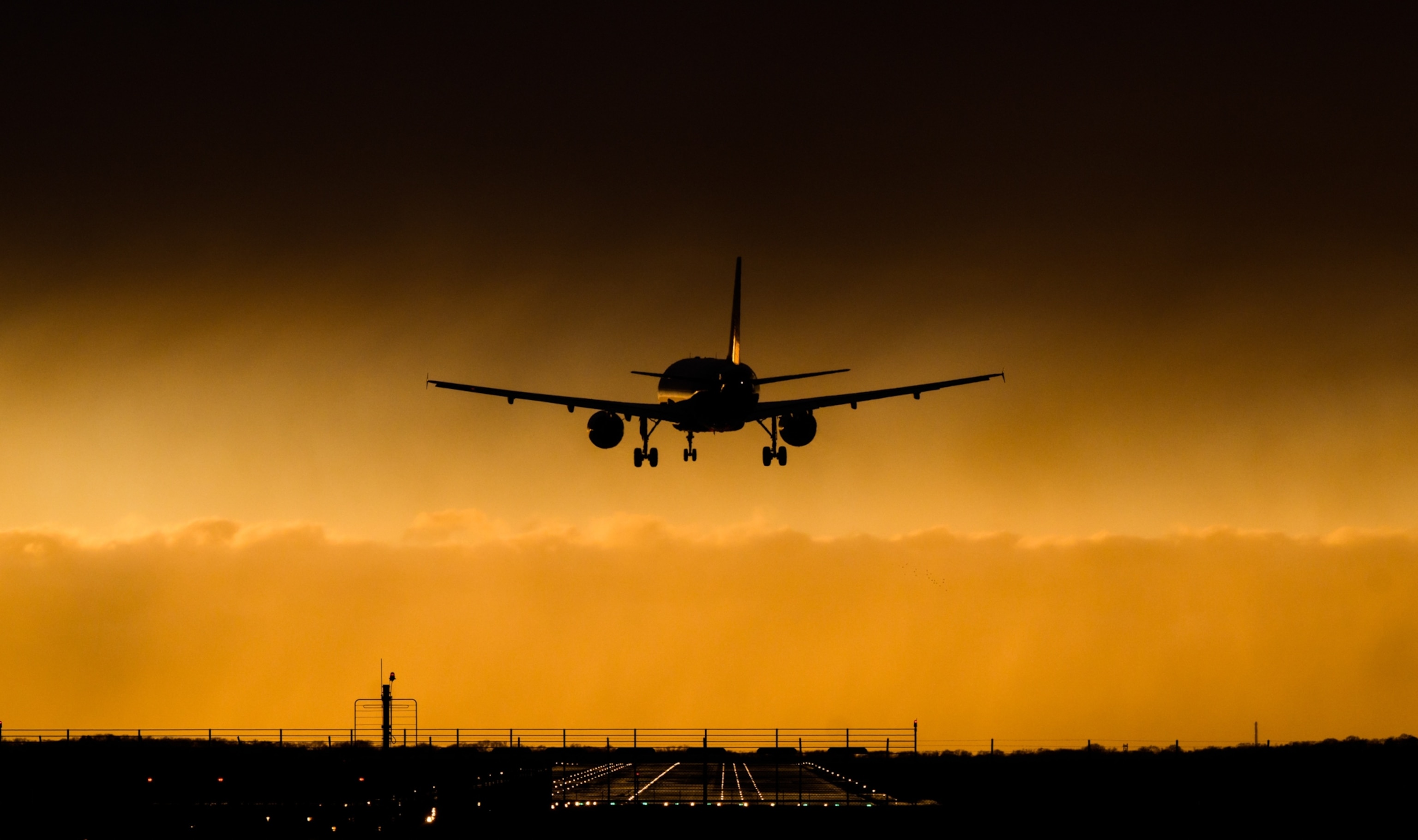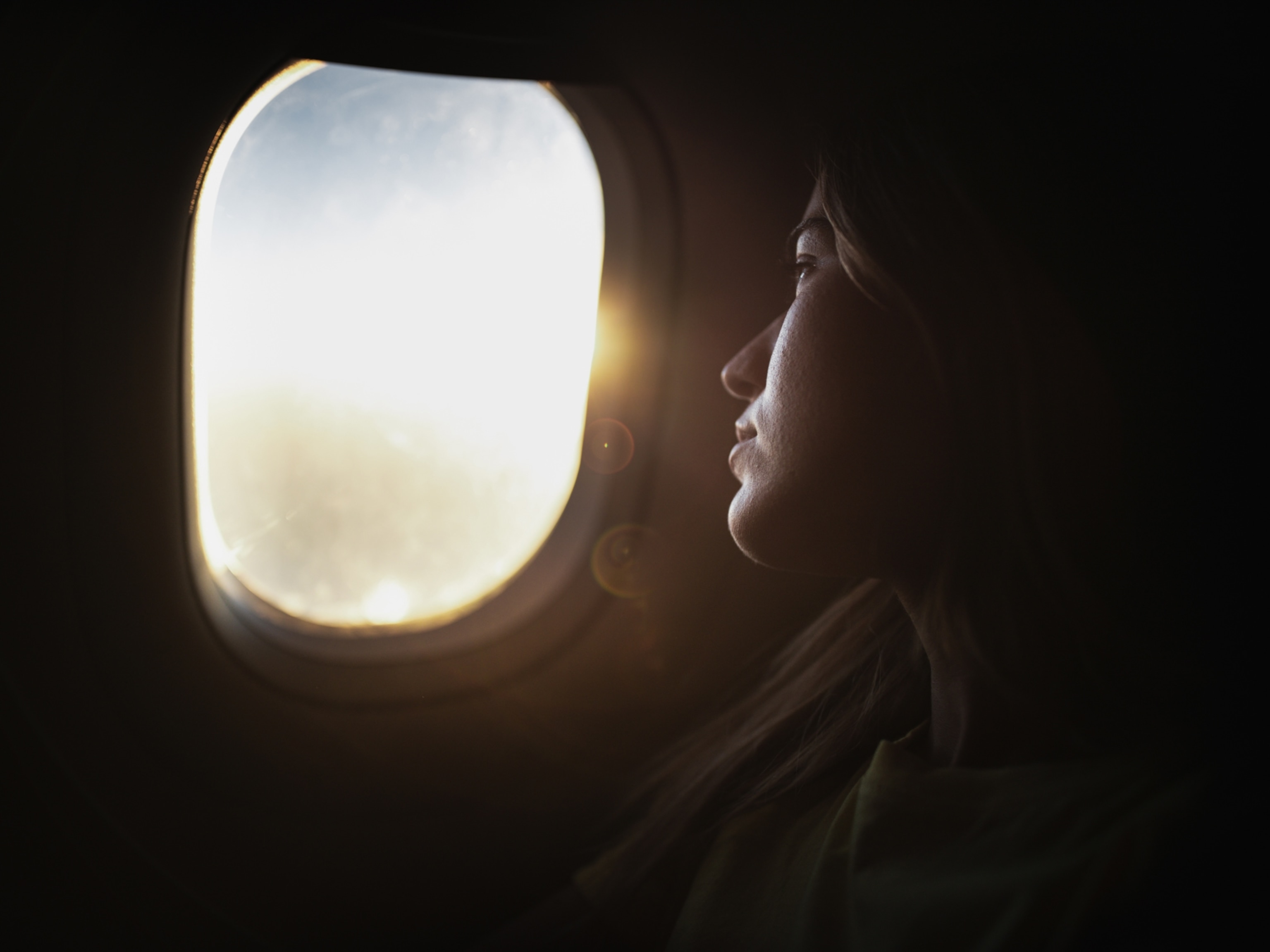5 reasons why flying is becoming more dangerous
Increasing turbulence, difficult take offs? Experts explain surprising ways why air travel is becoming more perilous as the planet warms.

Melting glaciers. More intense weather. Shrinking habitats and rising sea temperatures. There’s plenty to worry about when it comes to climate change—and if you’re a frequent flyer, you have good reason to fret. Jet travel isn’t just responsible for an estimated 3.5 percent of human-caused climate change: It’s increasingly becoming a victim of climate change itself.
Here are five reasons air travel is becoming more hazardous due to climate change—and a possible ticket to less dangerous, more environmentally conscious travel.
Turbulence
Extreme turbulence has been in the news lately, with turbulence incidents affecting Singapore Air, Air Europa, and Qatar Airlines flights and causing injuries, broken bones, and even a heart attack death. Such incidents are becoming all too common thanks to our changing climate, says Paul D. Williams, a professor of atmospheric science at the University of Reading who studies turbulence and climate change.
“There's already 55% more severe clear-air turbulence over the North Atlantic today than when satellite observations began in 1979,” he says. “Under an intensive future emissions scenario, a 180% increase is projected by the 2060s.” That will nearly triple the amount of airspace that contains turbulence strong enough to cause injuries, Williams adds.
The reason? The strong winds of the jet streams—upper-atmosphere wind currents running from west to east—are speeding up, researchers say. A 2023 analysis suggests that with every degree Celsius of emissions-fueled wind warming, the jet stream will speed up by 2 percent. That may cause more and longer storms along with more severe turbulence, making air flight bumpier than ever before.
Clear-air turbulence, an invisible form of air disruption that comes on unexpectedly, is also increasing with global warming. A recent study found a “significant positive trend” in such turbulence due to climate change, with North Africa, East Asia, and the Middle East at particular risk. The increase is so significant that researchers say designers should take it into consideration when creating future aircraft.
Become a subscriber and support our award-winning editorial features, videos, photography, and much more.
For as little as $2/mo.
Storm damage
In another recent air disaster, an Austrian Airlines plane’s nosecone was all but destroyed by hail during a thunderstorm this June. Extreme high and low temperatures are predicted to become more common, with an increase in precipitation and a heavier proportion of intense storms. According to NOAA, extreme single-day precipitation events have risen “substantially” since the 1980s, with high variability by region and a large increase in the percentage of land area experiencing such storms.
Though planes can fly during heavy rain, precipitation is associated with a reduction in the pilot’s visibility. And while the frequency of hailstorms may not increase with climate change, storms containing larger hail—and more potential damage—are predicted to become more frequent.
Flooded runways
Airports, which are often built in low, flat areas ideal for runways or in places with proximity to waterways, are already experiencing high-profile flooding events: For example, record rainfall in Rio Grande del Sul, Brazil submerged Salgado Filho International Airport in May.
According to one 2021 analysis, 100 airports are located below sea level worldwide, and the risk of flooding at major airports is predicted to increase by a factor of up to 69 by the year 2100 as sea levels rise. Even airports that aren’t located below sea level could experience flooded runways due to more severe storms and predicted rises in rainfall levels; rivers, too are predicted to flood more frequently as climate change marches on.
Too hot to handle
And water is just one of the issues facing airports in a warming world: Rising surface temperatures and heat waves, it turns out, affect planes’ ability to take off. Aircraft rely on lift—an aerodynamic force generated by the interaction between a plane and the air molecules that surround it—to get airborne. But as the atmosphere warms, air expands and becomes less dense, which slows planes’ ability to become airborne, meaning they’ll need more runway space and less cargo in order to get in the air. When Williams and his team looked at take-off performance of planes at Greek airports over the last six decades, they found that as the climate warmed, the distance planes needed to take off rose by about 0.15 percent annually on average.
Hot temperatures have other consequences for the airline industry. Consider the massive amount of heat that can be generated by a tarmac—heat that, on the hottest days, releases emissions comparable to that produced by automobiles. That heat can make airline workers’ jobs miserable and dangerous (including beverage bombs that have injured flight attendants), and cause pricey delays for airlines: In fact, extreme heat is responsible for more flight delays than wintry weather.
Longer flights
As if storms, heat, and turbulence weren’t enough, it turns out that climate change is also affecting the length of some flights. Williams’ team has found that the intensifying jet stream is causing stronger headwinds for westbound flights—winds that make air travel less efficient and slower.
Even if the aviation industry stopped growing, his team found, aircraft are projected to spend an extra 2,000 hours in the air each year. That means more emissions and more cost to airlines—and more hassle for travelers, who make up for shorter eastbound flights with lengthier westbound travels.
The good news
The long list of ways climate change may make air travel worse can depress even a climate optimist. And at first glance, Williams’ take on the issue can seem pessimistic itself. “As long as the climate continues to change, all these consequences remain on the cards,” he says, echoing the consensus that climate change will inevitably disrupt the patterns of 21st-century life worldwide.
But there’s a nugget of good news in the scientist’s words—and a grain of hope for the planet’s future. By reducing our reliance on (increasingly dangerous) air travel, we can help curb the worst effects of human-caused climate change by reducing emissions.
There may be another way, too: In 2022, more than 2,500 representatives of the global air travel industry announced an international goal of eliminating the industry’s carbon emissions entirely by the year 2050. It’s an ambitious goal, but any progress will benefit the planet. Though researchers agree that some of the damage humans have wrought on the planet can’t be reversed, they also concur that with some cooperation and sacrifice, humans can sidestep the worst predictions by reducing their impact on the planet today.
Stopping the worst-case scenario will be tough, but global action could make the planet—and air travel—more livable in the decades to come.
Related Topics
You May Also Like
Go Further
Animals
- We finally know what caused Florida fish to spin in circles until they diedWe finally know what caused Florida fish to spin in circles until they died
- 5 clever animals that treat and prevent their own illnesses5 clever animals that treat and prevent their own illnesses
- What would the world look like without mosquitoes?What would the world look like without mosquitoes?
- Social media loves to villainize dolphins. Here's why it's wrong.Social media loves to villainize dolphins. Here's why it's wrong.
- How did wolves evolve into dogs? New fossils provide cluesHow did wolves evolve into dogs? New fossils provide clues
Environment
- This little bird tells the story of the East Coast’s disappearing marshesThis little bird tells the story of the East Coast’s disappearing marshes
- ‘Corn sweat’—and other weird weather phenomena—explained‘Corn sweat’—and other weird weather phenomena—explained
- A sea tornado sank a yacht. We might see them more often.A sea tornado sank a yacht. We might see them more often.
History & Culture
- Your favorite foods have surprising global originsYour favorite foods have surprising global origins
- How did ancient Egyptian obelisks end up all over the world?How did ancient Egyptian obelisks end up all over the world?
- What we’ve learned—and lost—since the Titanic wreck was foundWhat we’ve learned—and lost—since the Titanic wreck was found
- Did Babe Ruth really ‘call’ this legendary home run?Did Babe Ruth really ‘call’ this legendary home run?
- The real history behind the legend of China's Monkey KingThe real history behind the legend of China's Monkey King
Science
- 8 things we’ve learned about how alcohol harms the body8 things we’ve learned about how alcohol harms the body
- Is mouth taping the secret to a better night's sleep?Is mouth taping the secret to a better night's sleep?
- Mold is in your kitchen—and in places that might surprise youMold is in your kitchen—and in places that might surprise you
Travel
- This slave rebellion was almost lost to history–until nowThis slave rebellion was almost lost to history–until now
- Discover America's Oktoberfest capital: CincinnatiDiscover America's Oktoberfest capital: Cincinnati
- Here's what an astronaut has to say about space tourismHere's what an astronaut has to say about space tourism
- 4 of the best food experiences on Scotland's Isle of Skye4 of the best food experiences on Scotland's Isle of Skye







